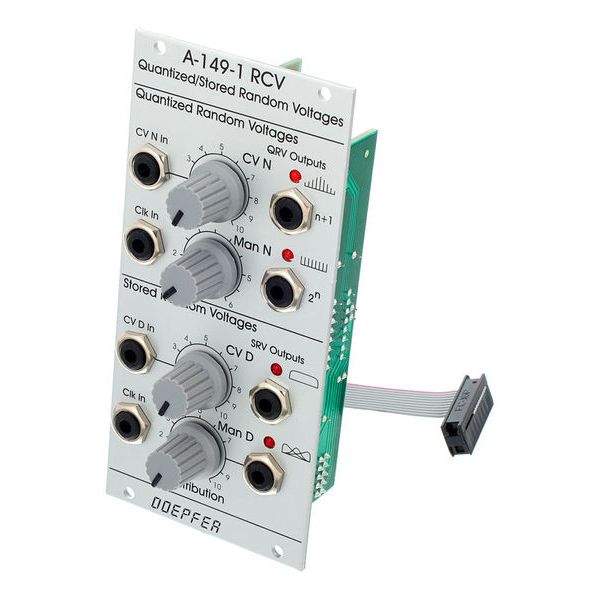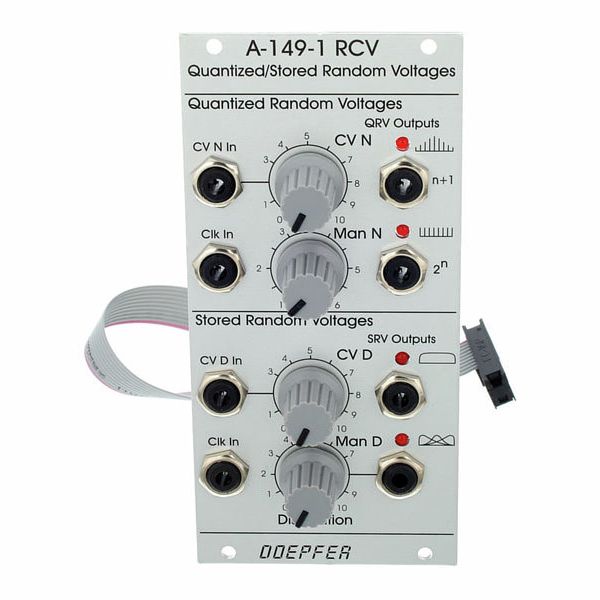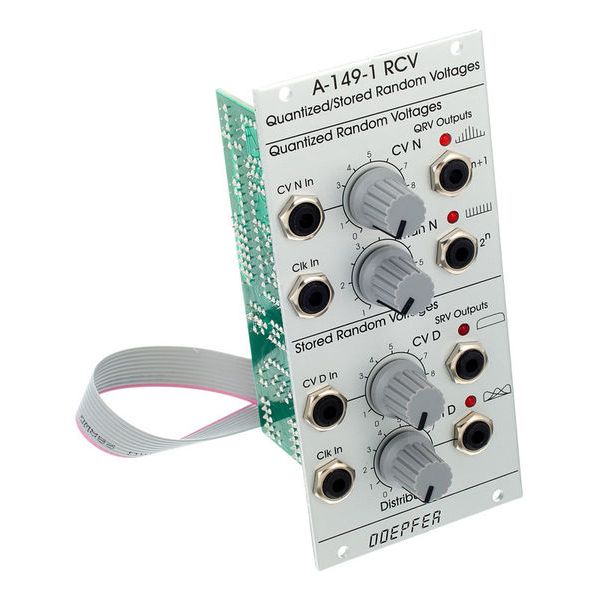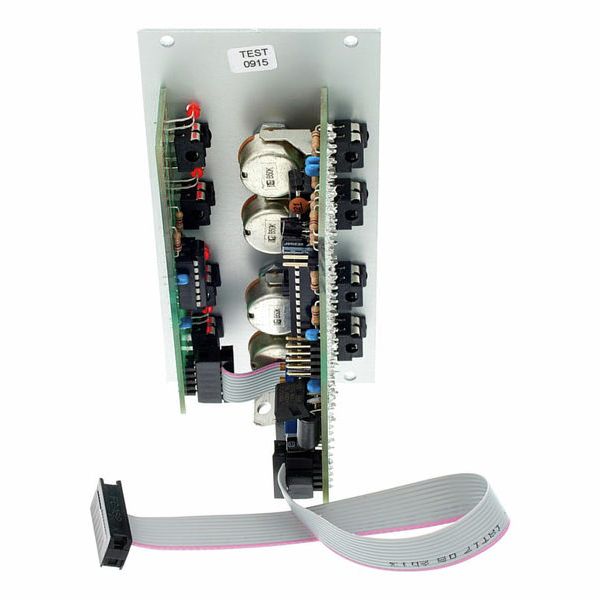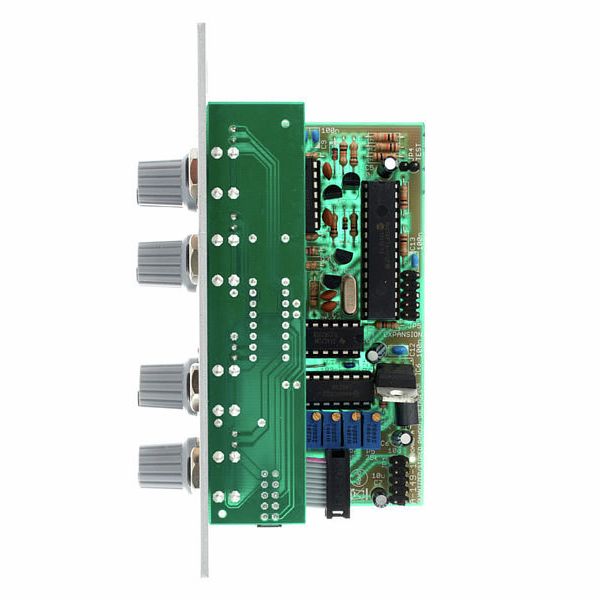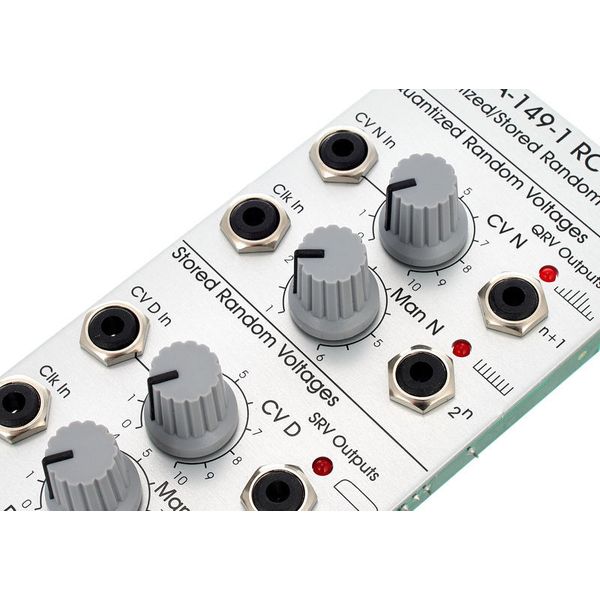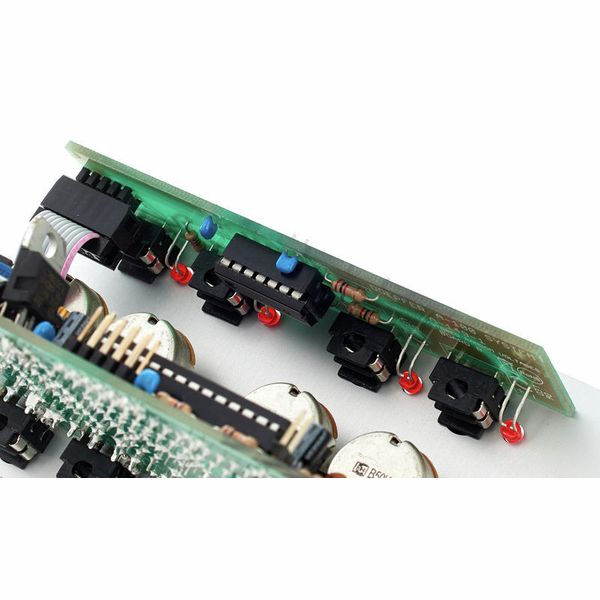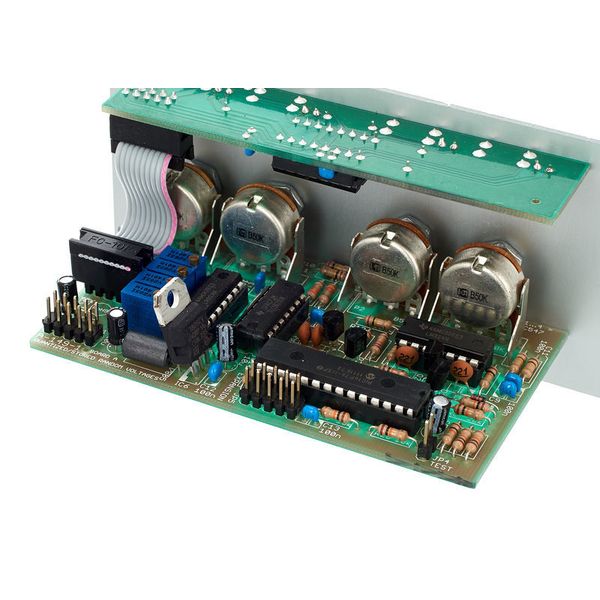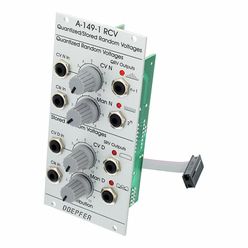Eurorack Module
- Generates 4 different random control voltages
- 2 outputs
- Trim potentiometers for adjusting the voltage levels
- Eurorack format
- Width: 12 HP
- Depth: 60 mm
- Power requirement: +40 mA (+ 12V) / -10 mA (-12V)
- Suitable expander module: Art.199100 (not included)
Disponível desde
Dezembro 2006
número de artigo
199098
unidade de venda
1 peça(s)
Switch Modul
No
CV-Editor/VC-Processor
Yes
Tools
No
Width
12 TE / HP
-
Indicar Doepfer Módulos diversos
-
Módulos diversos Indicar na faixa de preços de 120 € - 160 €
-
para o grupo de produtos Módulos diversos
-
para o grupo de produtos Sintetizadores modulares
-
para o grupo de produtos Sintetizadores
-
para o grupo de produtos Teclados
-
Mostrar Informações do fabricante sobre Doepfer
-
Doepfer Teclados em resumo





